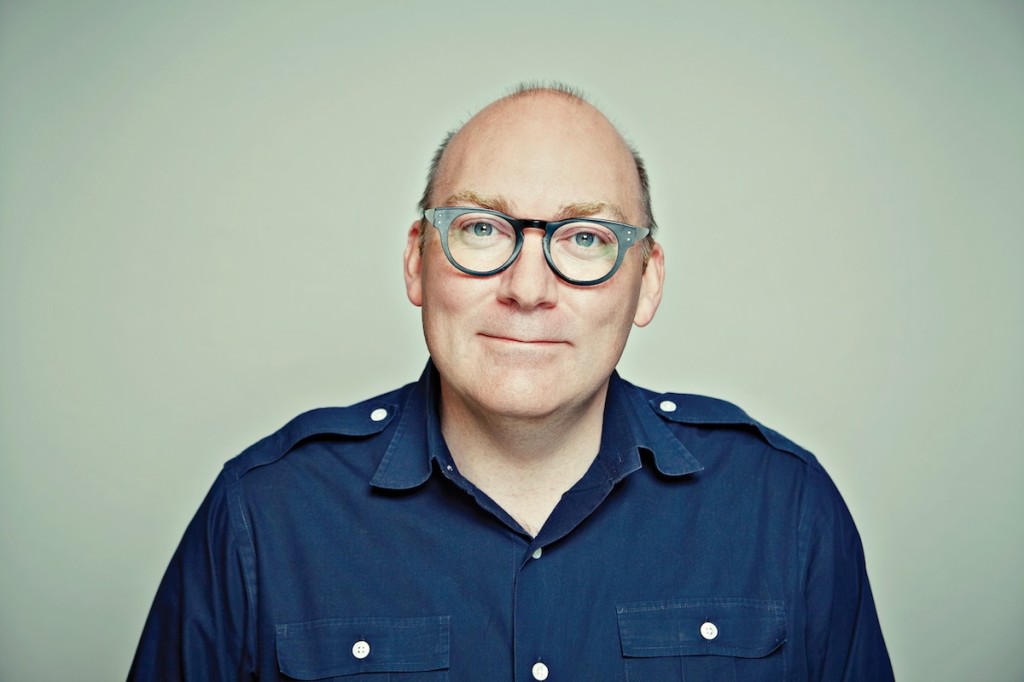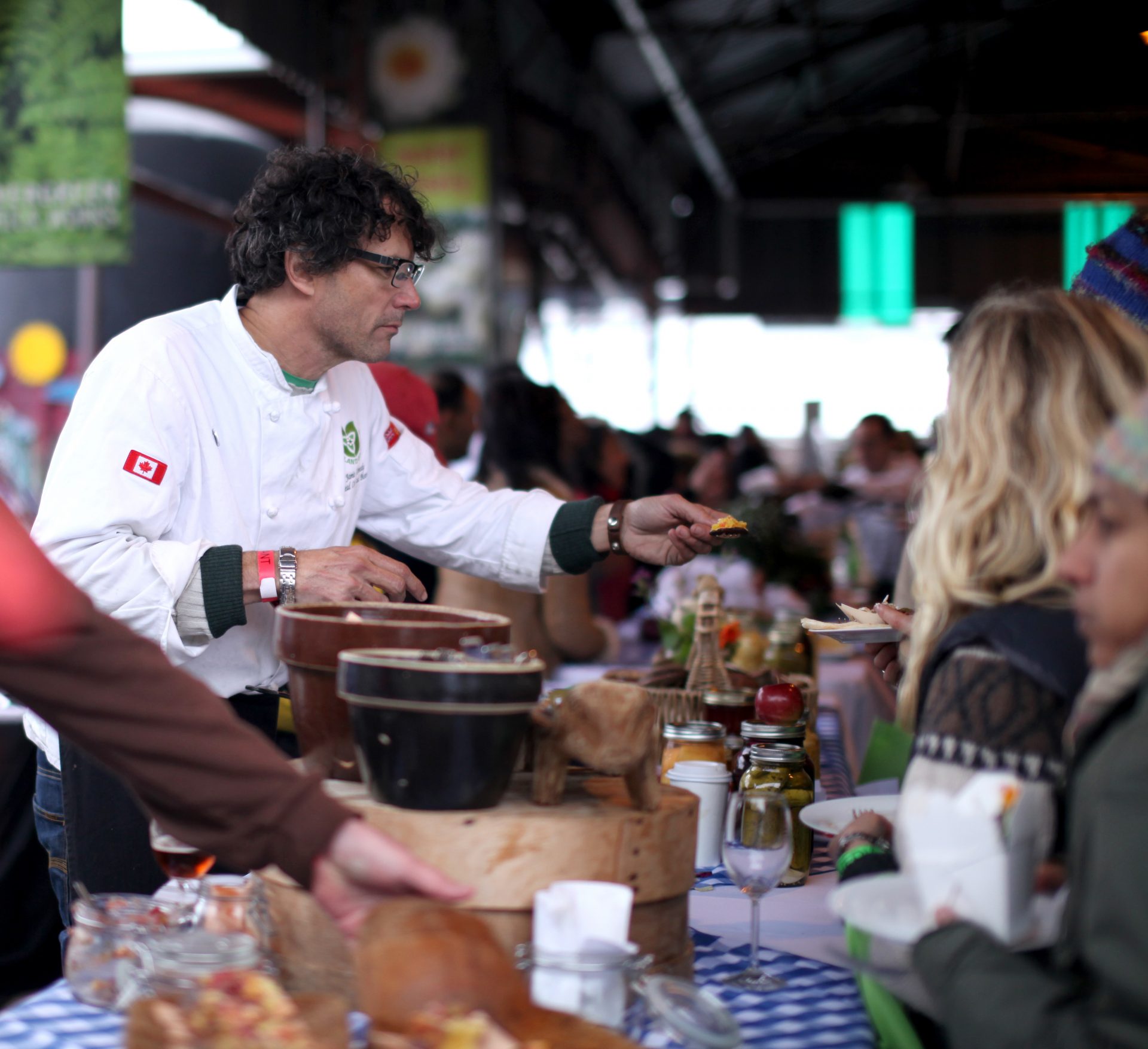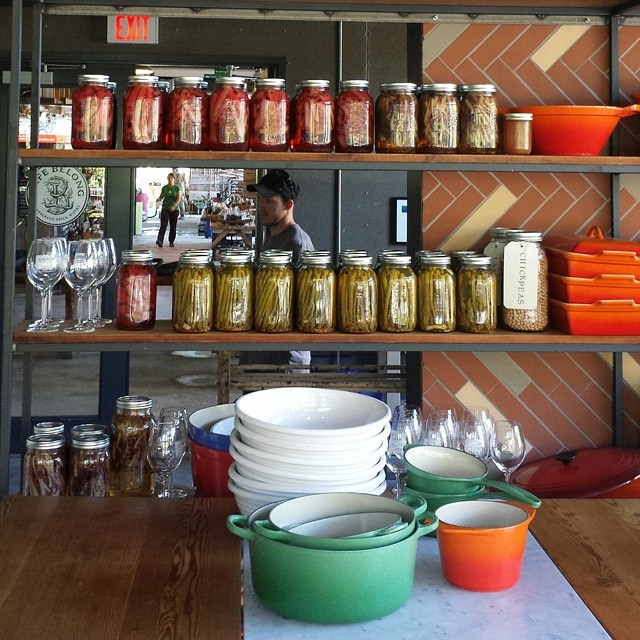
The man behind Intervin, the erudite and charming Chris Waters.
This week we sit down for a good old blether with Wine Writer and all round nice fellow Christopher Waters, Editor of Vines magazine and the driving force behind the InterVin International Wine Awards.
Good Food Revolution: Chris, it’s great to chat with you… Would you mind telling our readers how your journey into the wild world of wine began?
Christopher Waters: It started with a job as a tour guide at Hillebrand Estates Winery in Niagara-on-the-Lake. I came home to St. Catharines after my first year of university and was hired on at Hillebrand, which at the time was owned by a Germany winery, Scholl & Hillebrand. Through Hillebrand’s indepth staff training and tastings, I quickly realized that what was happening in my backyard (circa 1988) was just a drop in the fermentation tank. I spent four summers at Hillebrand, learning all that I could about viticulture and winemaking, and continued to read and go to tastings to brush up my knowledge.
GFR: And then came Vines, a groundbreaking magazine at the time… how did that come about?
CW: Vines was created by a group of friends recruited by founding publisher Walter Sendzik. We had worked together on an urban weekly called Pulse Niagara that was largely geared to alternative music and Walter wanted to branch out and start up his own venture. Being in Niagara, surrounded by the growing grape and wine industry, we saw the potential to talk about wines from a younger and more engaged perspective. Having done countless band profiles, we thought what if we interviewed winemakers and chefs as if they were the new rock stars. What about learning about their creative processes and interests? The idea was that if we put a human face on wine, notably Canadian wine, we could make it more accessible to those who either viewed it as being pretentious or elitist or with the suspicion that it wasn’t as good as the wines from around the world. We also maintained a celebrity focus to the editorial package by talking to people like Steven Page, Ron McLean, Douglas Coupland, Paul Gross and Amanda Marshall about their appetite for wine, food and travel. Sixteen years on, we have evolved apace with Canada’s wine culture. Vines continues to flourish.
GFR: For as long as I can remember you been a steadfast supporter of the Canadian wine industry and its wines… what are your feelings about today’s Canadian wine scene compared to that of decades ago when you led tours at Hillebrand?
CW: Vines focused solely on the Canadian wine industry for the first two years of its life and then started writing about Canadian wines alongside international bottles. It’s still a story that we seek to own. It’s ours to tell. What’s amazing to me now is how so much of the early aspirations of pioneers like Donald Ziraldo, John Howard and the Bosc family have materialized. Canadian wines are no longer a cautionary tale or the punchline to a joke. They are justifiably being celebrated alongside their cool climate counterparts as wines of distinction and authenticity around the world. Our Rieslings and Chardonnays offer amazing quality at a variety of prices. In the right hands, Pinot Noir, Cabernet blends and Syrah can be equally transcendent. Best of all perhaps, the sparkling wine revolution has caught fire. Winemakers are embracing styles of wine that show that our potential and pedigree doesn’t start and end with Icewine.
GFR: Although many amazing Canadian bottlings are being recognized internationally, I often feel that even after all this time some Canadians their nose up at domestic wines. Your thoughts?
CW: Sadly that’s still true. Some woefully out of touch people — the sort that Oscar Wilde dismissed as knowing the price of everything and the value of nothing — continue to hold grudges. But the prospects have never been better for Ontario wine in the Toronto market, which has long been the hurdle where many a local vintner’s optimism has fallen. The generational shift has made Ontario wine, Canadian wine, most favoured with the new breed Toronto sommeliers. Curiously, there seems to be a Freaky Friday thing going on. Vancouver sommeliers, who used to be über-invested in the wines from the Okanagan are now shopping the world (to use that old LCBO tag line) whereas Toronto’s young guns are embracing the local wines with great gusto.
GFR: What can you tell us about the history of the InterVin competition and how you came to be part of it?
CW: The InterVin International Wine Awards were founded in 1986 by Andrew Sharp, who was one of Canada’s original wine experts. They faded into extinction shortly after his death in 2000. We moved to revised and revamp InterVin five years ago as a partnership between Vines Magazine and the team that operates the Gourmet Food & Wine Expo and the Niagara Food & Wine Expo. Acting as head judge, I took the best attributes of the international wine competitions that I had participated in to make an awards program that truly celebrated excellence in winemaking.
GFR: Would you mind sharing some of numbers from this year’s competition?
CW: We enjoyed a record year in terms of entries and exposure for our award-winning wines. Nearly 1,300 wines from 17 countries were part of the tasting, which took place over three days at White Oaks Resort & Spa in Niagara-on-the-Lake. We all was tasted and debated, 57 wines received gold medals. There were 210 silver medals awarded and 482 honours awards conferred (effectively a bronze medal rating).
GFR: What are the biggest challenges in setting up a wine competition of this scale?
CW: It’s a massive undertaking to organize 1,300 wines into meaningful flights that can be evaluated by the judging panels efficiently and effectively. But thanks to a dedicated team working in the back room, it’s been a seamless orchestration. The biggest hurdle is likely getting the wines delivered on time…
GFR: There are quite a number of annual wine competition in Canada these days… what is it that differentiates InterVin?
CW: InterVin stands apart because of the calibre of the judges and the system of evaluation. A sommelier, winemaker and writer/educator are paired together to taste the wines independently and then discuss/debate the merits of each so that they can present a group consensus. It’s a system that ensures that every wine gets a fair hearing and that our wine community can cross-pollinate and learning from each other.
GFR: Obviously choosing the right judges for such a competition is of utmost importance… how do you go about doing that?
CW: I look for people that I respect in the wine trade that are great tasters who are well-versed on wine in a global context. I also look to mix panels to have different points of view and experience levels to inspire great discussion. As a result, we end up with a great diversity of award winners.
GFR: With that in mind I’m surprised that you keep on asking me back?
CW: There’s never a dull moment when you’re part of the debate over wine quality.
GFR: There have been some criticism of competitions that use Winemakers on their judging panels, something that InterVin has always done. What are your personal feeling on this?
CW: Why wouldn’t you want the opinion of someone who has dedicated their life to knowing all there is to know about growing grapes and making wine? Having judges with three different connections to the liquid in the glass makes our system more differentiating. There’s no group think. There’s no ego strutting. Judges rate the wines and have to defend their scores. And the wines that come out on top are bona fide because of that scrutiny.
GFR: Many competitions come under fire as it appears from the outside that almost everyone gets a medal simply for participating. How do you ensure that this doesn’t happen at InterVin?
CW: I trust that the judges I have selected know their stuff and will only seek to shine the spotlight on wines that they truly believe to be worthy. Wines that they personally would vouch for. More than 40 percent of the entries submitted to InterVin this year failed to reach the podium. In many cases, the wines weren’t bad — they were decent, commercially acceptable wines that failed to show any spark or personality so no medal was awarded. That’s why the InterVin Awards program has garnered respect from the wine trade and trust from consumers over the past five years.
GFR: How do you choose your winery of the year?
CW: The Winery of the Year is calculated by looking at the scores of producers that submit five wines or more. We want to see across the board quality and consistency. Wolf Blass from Australia took top honours, while Tawse Winery from Vineland and Painted Rock from the Okanagan ranked as the Canadian Winery of the Year and the British Columbia Winery of the Year respectively.
GFR: I’m sure that that Wolf Blass’ win may come as a surprise to some… how did this come about?
CW: Wolf Blass took the top prize because they submitted a truly compelling range of wines that wow’d our judges. They achieved gold medals for the style of rich, ripe red wines that they are known for, but also for a distinct and dramatic Rieslings. Many people’s awareness of Wolf Blass begins and ends with the iconic Yellow Label Cabernet, which celebrated its 30th anniversary in Canada earlier this year. But there’s so much more to discover in their portfolio that makes truly interesting and enjoyable wines at prices that range from $12 to $120+ per bottle.
GFR: Would you tell us about InterVin’s events at this year’s Gourmet Food And Wine Show?
CW: On the opening night, Thursday, November 14, I’ll be pouring a selection of 10 of the gold medal winning wines, including the top scoring white, red and sparkling, with some of the judges for the competition. The free-spirited tasting will single out some exceptional wines and help to illustrate what we thought made them to be so transcendent. I’ll also be pouring some InterVin medal winners during a special Saturday night tasting in honour of the 15th anniversary of Vines Magazine and at special Friday afternoon session at the #TrendCentral tasting stage on the show floor. Exhibitors will also be using the opportunity to fly the flag for their medal winners so it’s a great chance for consumers to come out and see the wines that were singled out from the pack.
GFR: Well Chris, thank you for your time, and we look forward to seeing you at the show later this month!
 Edinburgh-born/Toronto-based Sommelier, consultant, writer, judge, and educator Jamie Drummond is the Director of Programs/Editor of Good Food Revolution… And he is looking forward to sharing a glass with Chris at the Gourmet Food and Wine Show.
Edinburgh-born/Toronto-based Sommelier, consultant, writer, judge, and educator Jamie Drummond is the Director of Programs/Editor of Good Food Revolution… And he is looking forward to sharing a glass with Chris at the Gourmet Food and Wine Show.







